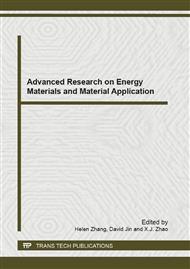p.105
p.109
p.113
p.117
p.121
p.125
p.129
p.133
p.137
Analysis of Portland Cement Hydration Mechanism and its Material Applications in Engineering
Abstract:
On the basis to clarify the Portland cement hydration mechanism, we have a brief analysis of research methods about Portland cement hydration mechanism, mainly including the hydration heat, ultrasonic method, resistivity method, mercury intrusion method, chemical combine method, CH quantitative measurement, X-ray diffraction method, scanning electron microscopy, providing a theoretical basis of Portland cement hydration mechanism and its material applications in engineering for further study and improvement.
Info:
Periodical:
Pages:
121-124
Citation:
Online since:
October 2012
Authors:
Price:
Сopyright:
© 2012 Trans Tech Publications Ltd. All Rights Reserved
Share:
Citation:


